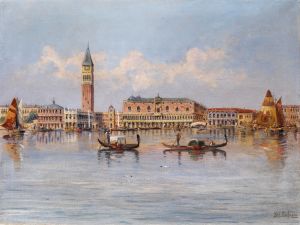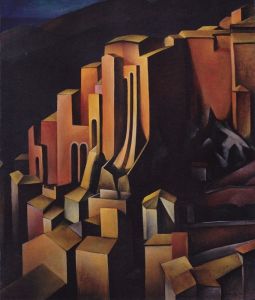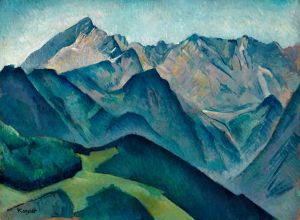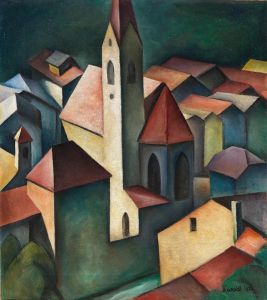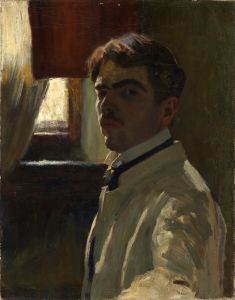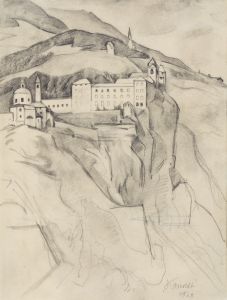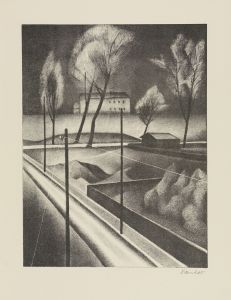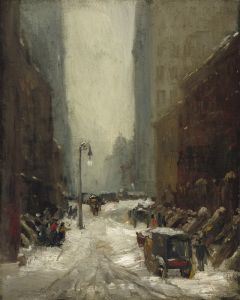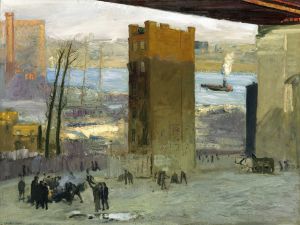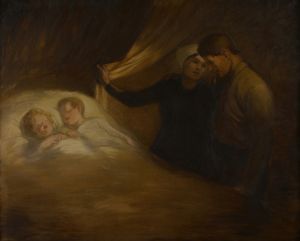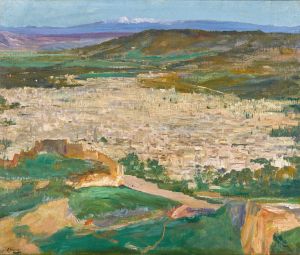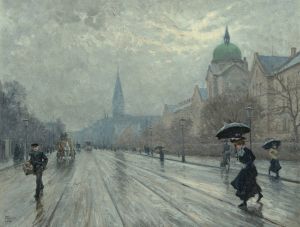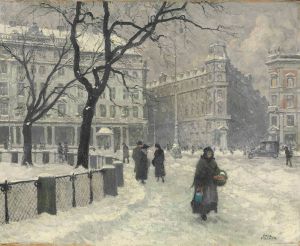
Dorfstraße in Leopoldshafen I
A hand-painted replica of Alexander Kanoldt’s masterpiece Dorfstraße in Leopoldshafen I, meticulously crafted by professional artists to capture the true essence of the original. Each piece is created with museum-quality canvas and rare mineral pigments, carefully painted by experienced artists with delicate brushstrokes and rich, layered colors to perfectly recreate the texture of the original artwork. Unlike machine-printed reproductions, this hand-painted version brings the painting to life, infused with the artist’s emotions and skill in every stroke. Whether for personal collection or home decoration, it instantly elevates the artistic atmosphere of any space.
Alexander Kanoldt was a German painter associated with the New Objectivity movement, which emerged in the 1920s as a reaction against expressionism. This movement was characterized by a return to realism and a focus on the objective representation of everyday life. Kanoldt, along with other artists of the time, sought to depict the world with precision and clarity, often emphasizing the mundane and the ordinary.
"Dorfstraße in Leopoldshafen I" is one of Kanoldt's works that exemplifies the principles of the New Objectivity. The painting captures a street scene in Leopoldshafen, a small town in Germany. While specific details about this particular painting are scarce, it can be inferred from Kanoldt's style and the movement he was part of that the work likely features a detailed and realistic portrayal of the street, with an emphasis on architectural elements and the atmosphere of the town.
Kanoldt's work often included architectural themes, and he had a keen interest in the geometric forms and structures found in urban and rural settings. His paintings are known for their meticulous attention to detail and their ability to convey a sense of stillness and order. This approach can be seen as a reflection of the broader New Objectivity movement's focus on depicting reality without the emotional intensity that characterized expressionism.
Leopoldshafen, the setting for this painting, is a town in the Karlsruhe district of Baden-Württemberg, Germany. It is situated near the Rhine River and has a history that dates back several centuries. The town's architecture and layout would have provided Kanoldt with ample material for his exploration of form and structure. The "Dorfstraße" or "village street" in the title suggests a focus on the everyday life and environment of the town's inhabitants.
Kanoldt's contribution to the New Objectivity movement was significant, as he helped to define its aesthetic and thematic concerns. His work, including "Dorfstraße in Leopoldshafen I," reflects a commitment to portraying the world with clarity and precision, capturing the essence of the places and scenes he depicted. Through his paintings, Kanoldt offered viewers a window into the quiet beauty and complexity of the world around them.
While specific information about "Dorfstraße in Leopoldshafen I" may be limited, the painting remains an important example of Kanoldt's artistic vision and his role in the New Objectivity movement. His work continues to be studied and appreciated for its technical skill and its ability to convey a sense of place and time with understated elegance.





